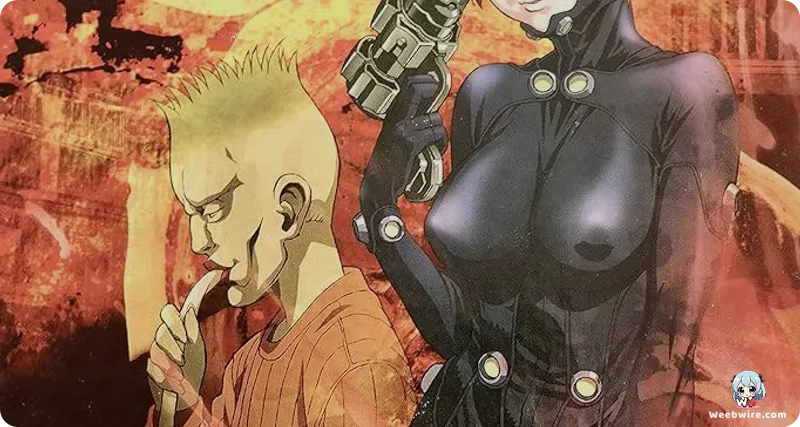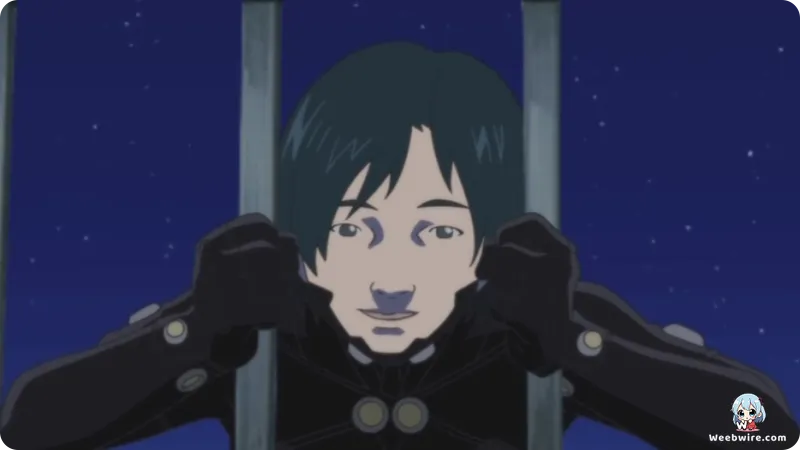Gantz's Legacy: How a 2004 Anime Defined a Genre with Unflinching Vision

Diving into the vast landscape of animated narratives, few series have dared to immerse audiences in such profound existential dread and raw, visceral action as Gantz. Launched in 2004 and brought to life by the acclaimed studio GONZO, this anime swiftly carved out a distinctive niche. It captivated viewers not only with its uncompromising depiction of violence and its signature ecchi elements but also through its deep psychological undercurrents and a premise that remains as unsettlingly relevant today as it was two decades ago. Far beyond its initial shock value, Gantz is rich with intricate details and bold creative decisions that often go unacknowledged, all contributing to its enduring and impactful legacy.
The Enigma of the Gantz Ball
At the heart of Gantz's chilling narrative lies the enigmatic black sphere itself, the 'Gantz Ball'. Its genesis, ultimate purpose, and the true nature of the macabre 'game' it orchestrates are deliberately shrouded in ambiguity throughout the anime. This sphere functions as a cold, impassive arbiter of fate, conscripting recently deceased individuals into a terrifying post-mortem existence where they are compelled to hunt and eliminate bizarre alien entities lurking on Earth. This deliberate lack of clear explanation surrounding the Gantz Ball's origins intensifies the pervasive existential horror, forcing both the characters and the audience to confront a cosmic absurdity that chillingly mirrors the unpredictable randomness of death itself. This central mystery is undeniably a cornerstone of the series' powerful psychological grip.
The Agonizing 100-Point Menu
Adding another layer of agonizing choice to this grim saga is the infamous '100-point menu'. Survivors who manage to accrue 100 points from successfully neutralizing aliens are presented with a trio of stark, life-altering options: the resurrection of a fallen comrade, the acquisition of a potent new weapon, or the complete erasure of their memories, allowing them to return to their former lives and effectively escape the deadly game. This profound moral quandary compels characters to confront their deepest desires and fears, frequently exposing the true cost of survival and the vastly different values individuals place on life, freedom, and even vengeance. It stands as a brilliant narrative device, elevating the series far beyond mere monster-hunting.
Kei Kurono's Transformative Journey
The remarkable evolution of its protagonist, Kei Kurono, serves as a powerful testament to the series' character depth. Initially, Kurono is portrayed as a deeply cynical, self-absorbed, and even morally questionable individual, starkly contrasting with the typical archetype of an anime hero. His arduous journey through the Gantz game is not one of immediate heroism but a grueling, often painful, process of forced maturation. Witnessing the brutal demise of comrades, enduring profound personal loss, and being pushed to his absolute physical and mental limits gradually erodes his initial apathy, compelling him to cultivate empathy and a newfound sense of responsibility. This raw, often unlikable, yet ultimately transformative portrayal of a protagonist was a daring creative choice that resonated deeply with a vast segment of the viewership.

Pioneering Animation and CGI Integration
GONZO's pioneering animation style for Gantz was genuinely groundbreaking for its era, particularly noteworthy for its early and extensive integration of Computer-Generated Imagery (CGI). While some of the CGI sequences might appear somewhat dated when compared to today's hyper-realistic standards, in the early 2000s, this innovative fusion of traditional 2D animation with advanced 3D elements, especially evident in the intricate alien designs and dynamic action sequences, was nothing short of revolutionary. It enabled a level of fluid motion and intricate detail that was challenging to achieve solely with hand-drawn animation, imbuing Gantz with a distinct visual identity that significantly set it apart from its contemporaries.
The Anime's Original Ending
It is also a widely recognized fact among fans that the Gantz anime culminates with an original ending that deviates considerably from its ongoing manga source material. This was a common occurrence for anime adaptations of long-running manga series during that period, as anime production schedules often caught up to the pace of the original serialization. While the manga continued for many additional years, delving into richer lore and more expansive story arcs, the anime provided its own conclusive resolution to the immediate narrative. This divergence sparked considerable debate and discussion within the fanbase, underscoring the unique challenges inherent in adapting such a complex and extended story.
Unflinching Depiction and Profound Themes
Beyond its technical innovations and compelling narrative choices, Gantz is unflinching in its graphic depiction of violence, gore, and the profound psychological trauma inflicted upon its characters. It steadfastly refuses to shy away from showcasing the brutal realities of combat and death, ensuring that every single encounter feels genuinely perilous. This raw, unfiltered approach serves not merely for shock value but profoundly emphasizes the sheer desperation and moral ambiguity inherent in the characters' dire situations. The series frequently explores profound themes of human nature, societal apathy, and the capricious nature of life and death, holding up a dark mirror to humanity's inherent flaws and remarkable resilience. Even its prominent ecchi elements, while sometimes controversial, often serve to underscore the vulnerability and objectification of the characters, thus contributing to the grim reality rather than simply existing as fan service.
From the instantly recognizable, form-fitting Gantz suits that bestow superhuman capabilities to the bizarre and frequently terrifying array of alien creatures, every element within Gantz meticulously contributes to its unique and deeply disturbing atmosphere. The series unequivocally remains a seminal work within the sci-fi horror genre, celebrated not just for its boundary-pushing content but for its remarkable ability to provoke profound thought and leave an indelible impression on those brave enough to step into its dark, undeniably compelling world.
Credits
Gantz
Author
Hiroya Oku
Cover Art
Hiroya Oku
Studio
GONZO
Publisher
Shueisha
Producers





